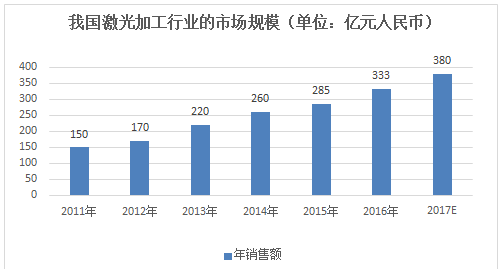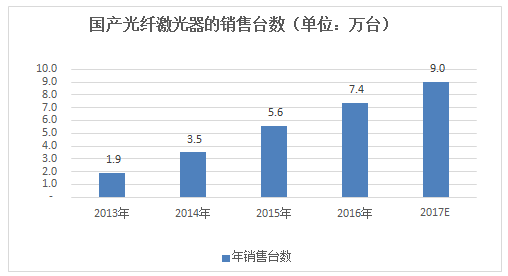 086-755-61282268
086-755-61282268 086-755-61282268
086-755-61282268
Fiber lasers are lasers that use rare earth doped glass fibers as the gain medium. In general, fiber lasers are mainly composed of pump sources, isolators, beam combiners, doped optical fibers and other components. The pump source is composed of one or more high-power laser diode arrays whose pump light is coupled into a rare earth-doped fiber as a gain medium via a special pump structure and photons at the pump wavelength are absorbed by the doped fiber medium , Forming the number of particles reversed, stimulated emission of light through the resonator mirror feedback and oscillation to form a laser output.
Compared with traditional solid and gas lasers, fiber lasers have the advantages of good laser beam quality, high energy density, high electro-optical conversion efficiency, good heat dissipation, compact structure, maintenance-free, flexible transmission and wide range of machinable materials Features, known as "the third generation laser." Fiber laser electro-optical conversion efficiency of up to 30% -35%, is the traditional solid, gas lasers several times the efficiency, very energy saving. The unparalleled technical advantages of fiber lasers make them widely used in materials processing such as engraving, marking, cutting, cladding, welding and surface treatment. They are gradually replacing various physical processing, chemical processing, printing processing, etc. Traditional processing methods.
With the start of the first Q-switched pulsed fiber laser sold by IPG in China in 2003, the development of commercial pulsed fiber lasers in China started. In 2004, based on Southampton University's technology-based SPI Corporation, MOPA tunable pulse width fiber lasers were introduced to the Chinese market under the application of the U.S. Apple products. Since then, the Chinese fiber laser market (Q-switched fiber lasers and MOPA fiber lasers) has been monopolized by nearly 90% of the two laser companies for up to five years.
In 2008, Wuhan Ruike launched the first domestic commercial Q-switched fiber laser, breaking the monopoly of the US IPG. In 2009, Rui Ke Q-switched fiber laser market has begun to small quantities, and initially obtained the market recognition of domestic lasers. In early 2009, Shenzhen Jupiter first introduced domestic commercial MOPA pulsed fiber laser, breaking the monopoly of the British SPI. Then, Shenzhen Chong Xin also introduced to the market commercial Q-switched fiber laser products.
After years of development, Wuhan Ruike in the field of high-power continuous fiber laser, Ruike, Jupiter, Chuangxin and other companies in the field of pulsed fiber lasers gradually occupy a larger domestic market, domestic fiber lasers are gradually Recapture the Chinese market.
By the end of 2016, more than 20 large and small domestic fiber laser brands have been established. In the fierce competition with foreign brands, they constantly make breakthroughs in innovation and development faster and faster. The main suppliers of Q-switched pulsed fiber lasers made in China include Wuhan Ruike, Shenzhen Chuangxin, Shenzhen Lianpin, Zhongguang Guanghui, etc. Shenzhen Jiept relies on the unique technical advantages of MOPA pulsed fiber lasers to further consolidate its own MOPA fiber laser The industry leader. Even in the traditional advantages of high-power CW optical fiber lasers, which is a traditional high-power continuous-wave optical fiber laser, a group of excellent domestic brands led by Wuhan Ruike has also been formed: Shenzhen Chuangxin, Shenzhen Jie Put, Shanghai Fei Bo, Shenzhen joint products, such as sea-photon.
According to Strategies Unlimited research reports, the global laser market in 2016 annual total revenue of 10.4 billion US dollars, is expected in 2017 is expected to exceed 11.9 billion US dollars, of which global fiber laser annual revenue in 2017 will be 8% speed Growth, reaching 14.094 billion US dollars.
In 2016, more than 650,000 medium- and small-power laser processing equipment were used in laser welding, drilling, marking and other fields in China. The installed capacity of medium-power laser cutting machines and welding machines was over 10,000 units. The installation of high-power laser machine tools More than 2300 units. Since 2011, the market size of China's laser processing industry has continued to grow, reaching 33.3 billion yuan by 2016, as follows:

Source: Review and Outlook of China's Laser Industry in 2016, Laser Processing Committee of China Optical Society
From 2013 to 2016, the sales volume of domestic fiber lasers in China continued to increase year by year, as follows:

Source: Review and Outlook of China's Laser Industry in 2016, Laser Processing Committee of China Optical Society
Domestic low-power fiber laser is mainly used for 3C product marking, micro-engraving and other fine processing areas. Domestic medium-power fiber lasers are widely used in the field of sheet metal cutting and welding, and the sales volume is expected to maintain rapid growth in the coming years. Domestic high-power fiber laser kilowatt-class or more mainly used in laser cutting, drilling, welding and other industrial fields, with the promotion of lightweight automotive industry in China and the application of composite materials processing market expansion, high-power laser has good prospects for development. The next few years, China's laser industry hot areas of application will include laser cleaning (except paint, degreasing, in addition to oxide layer, cleaning screw, rust, cleaning weld, mold repair, etc.), laser welding, Femtosecond laser applications and more.
Update time:2017/10/10 12:52:07 ¡¾Print page¡¿ ¡¾Close¡¿Service
Hotline
086-755-61282268
0138098901257 * 24-hour service hotline
Mobile
Website

Sweep the access mobile site
Follow
WeChat

Follow official WeChat